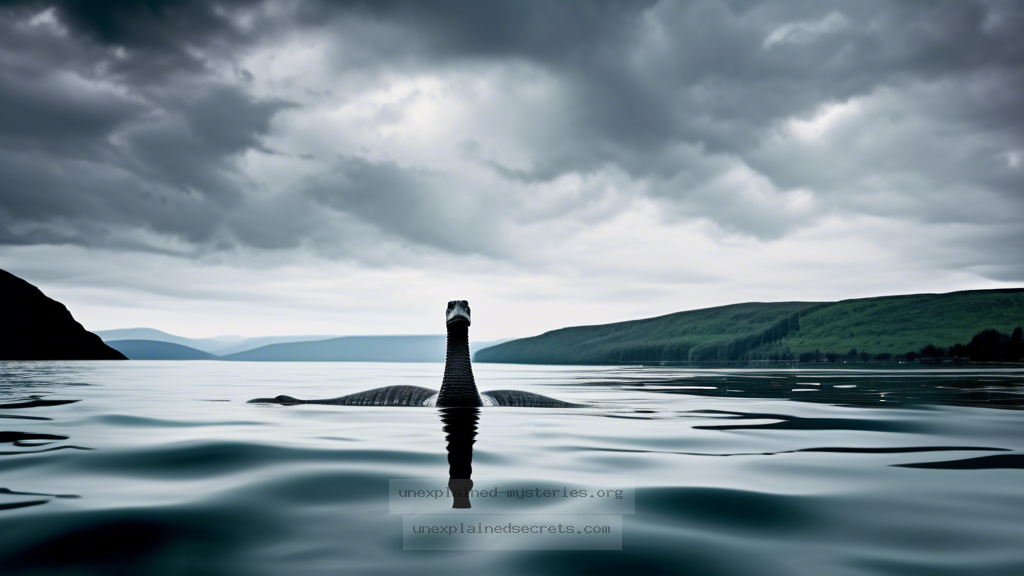What Lies Beneath the Surface of Loch Ness? An In-Depth Look at Sonar Detections of the Monster
What Lies Beneath the Surface of Loch Ness? An In-Depth Look at Sonar Detections of the Monster
The Loch Ness Monster, affectionately known as “Nessie,” has captivated the imaginations of millions for decades. The allure of this legendary creature lies not just in folklore but also in the many sonar detections that have been reported over the years. But what do these sonar readings really tell us? Are they evidence of a living creature lurking in the depths, or are they simply artifacts of technology? In this blog post, we will dive deep into the world of sonar detections related to the Loch Ness Monster, exploring the historical context, core theories, and implications of these mysterious signals.
Historical Context of Loch Ness and Its Monster
Loch Ness, a large freshwater loch in the Scottish Highlands, has been a site of mystery for centuries. The earliest mention of a creature in the loch dates back to the 6th century, when St. Columba reportedly encountered a water beast. However, it wasn’t until the 20th century that the legend of Nessie gained significant traction, particularly after the famous 1934 “Surgeon’s Photograph” purportedly showing the creature was published. This image sparked a wave of interest and investigation, leading to numerous expeditions and technological advancements aimed at uncovering the truth about Nessie’s existence.
Understanding Sonar Technology
Sonar, or Sound Navigation and Ranging, is a technology that uses sound waves to detect objects underwater. Sonar systems emit sound pulses, which bounce off objects and return to the source, allowing researchers to create images of submerged structures or creatures. Over the years, various sonar technologies have been employed in Loch Ness, ranging from traditional single-beam sonar to more sophisticated multi-beam and side-scan sonar systems.
Did You Know? Modern sonar technology can produce detailed 3D renderings of underwater landscapes, making it a powerful tool for exploring the depths of Loch Ness.
Notable Sonar Detections in Loch Ness
Several key sonar investigations have produced intriguing results suggesting the presence of large, unidentified creatures in Loch Ness. One prominent case occurred in 1987 during Operation Deepscan, when a fleet of boats equipped with sonar technology scanned the loch in a coordinated effort. The operation recorded several large and unexplained sonar contacts beneath the surface, with one reading suggesting a mass approximately 30 feet long, which was never conclusively identified. This event reignited public interest and speculation surrounding Nessie’s existence.
Evaluating the Evidence: What Do Sonar Detections Really Indicate?
While sonar detections are compelling, they are not definitive proof of the Loch Ness Monster. Many of the sonar signals could be attributed to natural phenomena, including underwater currents, schools of fish, or submerged logs. In fact, a study by marine biologist Neil Gemmell in 2018, which involved sampling water from Loch Ness, found no evidence of large animals, which raises questions about the validity of sonar readings suggesting otherwise. The complexity of sonar data also means that misinterpretations can easily occur, leading to sensational claims without solid evidence.
Core Theories: What Could Nessie Be?
Several theories have emerged about what Nessie could be, based largely on sonar detections. Some researchers propose that Nessie could be a surviving plesiosaur, a marine reptile from the age of dinosaurs. Others suggest that the creature could be a large sturgeon or a misidentified otter. Alternatively, some believe that the sonar contacts could be a result of underwater geological formations or distortions caused by water temperature variations.
Common Misconception: Many people assume that sonar detections must indicate a large creature, but they can often signify other natural phenomena.
Alternative Perspectives: The Skeptics’ View
Skeptics of the Loch Ness Monster phenomenon often argue that the evidence supporting its existence is merely anecdotal. They question the reliability of sonar technology and the interpretation of its data. Some critics point to the lack of physical evidence, such as bones or other biological materials, and argue that if a creature of such size were living in Loch Ness, there would be more concrete proof of its existence. They also highlight the potential for human error in interpreting sonar readings, emphasizing the need for rigorous scientific standards.
Common Misconceptions and Clarifications
Despite the ongoing fascination with Nessie, several misconceptions persist about sonar detections and the Loch Ness Monster. One such misconception is that sonar can definitively identify a creature. In reality, sonar can only indicate the presence of a mass; it cannot determine the nature of that mass without additional evidence. Furthermore, many people assume that all sonar signals are indicative of large creatures, ignoring the possibility of smaller organisms or environmental factors.
Best Practices for Investigating Nessie
For those interested in exploring the mystery of Loch Ness, several best practices can enhance your investigation. First, familiarize yourself with the technology used in sonar, including its limitations and potential for error. Second, consider collaborating with marine biologists or environmental scientists who can provide valuable insights into the ecology of the loch. Third, maintain a critical perspective when evaluating evidence, and be prepared to distinguish between sensational claims and scientifically validated findings.
Future Developments and Ongoing Research
The search for the Loch Ness Monster continues to evolve, with new technologies and methodologies being employed. The use of environmental DNA (eDNA) sampling is one promising avenue that researchers are currently exploring. By analyzing water samples for traces of DNA, scientists hope to identify any unknown species living in Loch Ness, potentially shedding light on the mystery of Nessie. As technology advances and our understanding of the ecosystem improves, the quest to uncover the truth about the Loch Ness Monster may finally yield definitive answers.
Conclusion: The Enigmatic Nature of Nessie
The sonar detections related to the Loch Ness Monster present a fascinating blend of intrigue, technology, and mystery. While some readings have suggested the presence of large, unidentified creatures beneath the loch’s surface, the evidence remains inconclusive. The ongoing debate about Nessie’s existence highlights the broader themes of exploration and the human desire to uncover the unknown. As we continue to delve into the depths of Loch Ness, we are reminded that some mysteries may never be solved, but the journey of discovery is rich with possibilities.
Other Articles
Recent Posts
- What Happened to Flight MH370? The Conspiracy Theories That Still Haunt Us
- What Secrets Lurk Within the Walls of the Infamous Trans-Allegheny Lunatic Asylum?
- What Evidence Supports the Existence of Bigfoot in the Pacific Northwest?
- What Happened to the Indus Valley Civilization? Unraveling the Mysteries of Ancient Urban Life
- Can Telepathy Be Scientifically Proven Through Laboratory Evidence?







